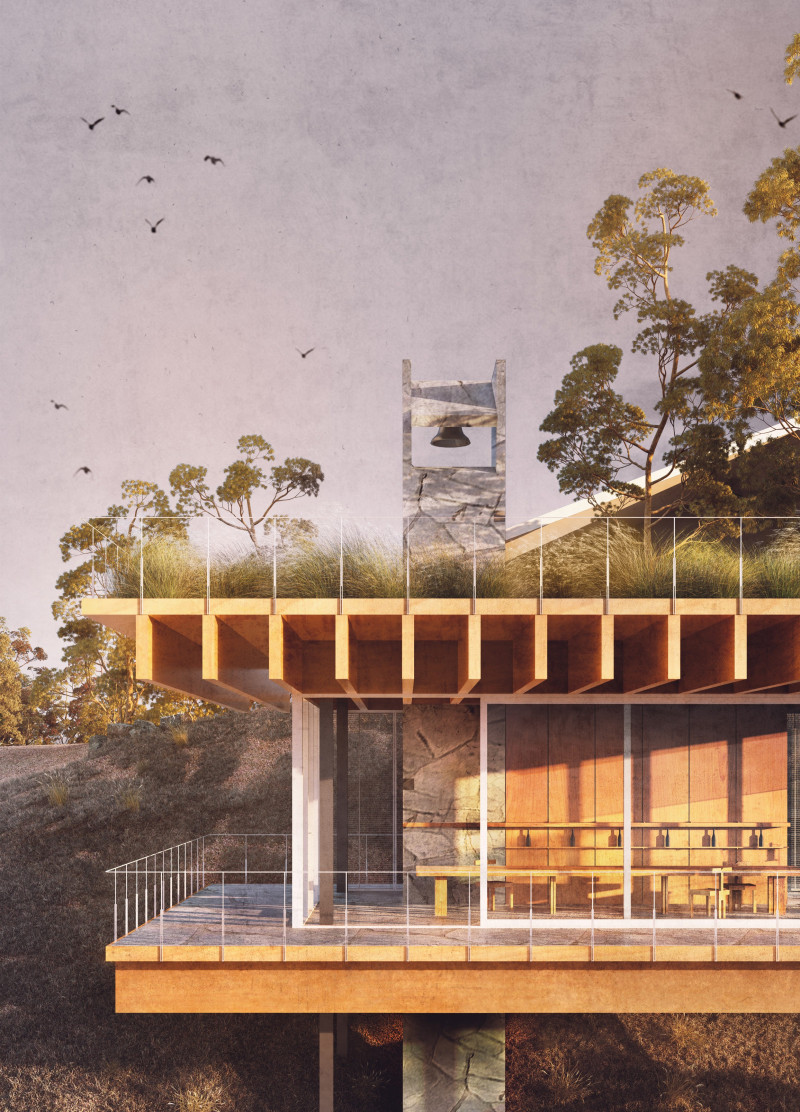5 key facts about this project
The Monte d'Orio Wine Tasting Room is designed to create a strong connection with the landscape while providing an engaging experience focused on winemaking. Located within a beautiful vineyard setting, the concept emphasizes a fusion between indoor and outdoor spaces, allowing visitors to interact closely with the environment. The aim is to enhance social experiences and offer insights into the winemaking process through thoughtful architectural choices.
Spatial Layout
The design begins with a bridge that links various levels of the winery, encouraging movement and exploration. This bridge acts as a transition from the working areas of winemaking to the dedicated tasting room. The tasting room features a fully glazed wall that brings in ample light and offers unobstructed views of the vineyard. This openness helps to create an inviting atmosphere for gatherings and enhances the appreciation of wine.
Connection to the Environment
A key feature of the project is the cantilevered terrace that extends from the tasting room. This outdoor area encourages visitors to engage directly with the natural surroundings. It transitions users gracefully from the enclosed space to the wide-open landscape, enhancing the feeling of being immersed in nature. The terrace complements the overall design by allowing for panoramic views that enrich the wine tasting experience.
Circulation and Access
Movement within the design is an important aspect, facilitated by an external staircase that connects the roof terrace, tasting room, and vineyard. This pathway encourages visitors to explore different parts of the site, deepening their understanding of winemaking. A bell tower clad in natural stone provides an elevator, making the space accessible for all users. It also serves as a landmark that helps mark time, integrating the architectural experience with the daily rhythm of the winery.
Choice of Materials
Thoughtful material selection is essential in the design. Natural stone, wood, glass, and metal have been chosen to create a balance between organic and man-made elements. These materials enrich the tactile experiences visitors encounter during their stay. They enhance the sensory quality of the space, inviting people to engage with the architecture in a meaningful way.
The design allows light to play across surfaces, creating changing patterns throughout the day. This interaction between light and space adds depth and enhances the overall experience of being in both the building and the vineyard.























































